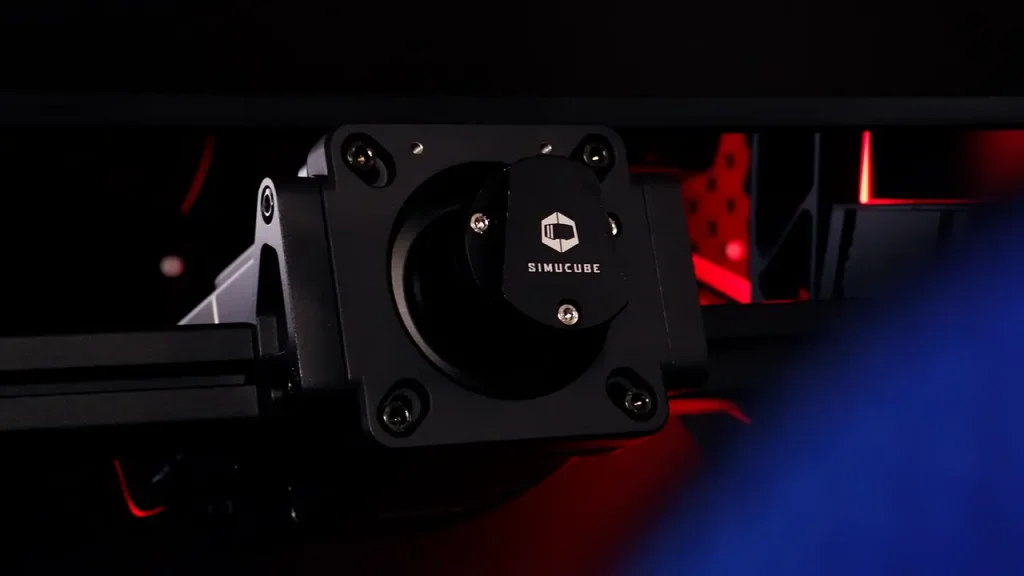
Our Verdict
Pros
- Simple and sleek design.
- Incredibly high build quality.
- Performance is class leading.
- Some of the smoothest force feedback available.
- Better performance to price ratio than cheaper Sport wheel base.
- Wireless connection to some wheels.
Cons
- Only PC compatible.
- Expensive.
- QR connecting pin is not the best quick release method despite being secure.
- E Stop is hard to mount.
- No bottom mounting holes.
- Lack of connection ports on the rear.
The Simucube 2 lineup has been with us for over 6 years, and from what we know, the next generation is a good way out. I’ve had my Pro wheel base for a little while now, and have recently reviewed direct drive wheels in a similar ballpark from the new SIMAGIC Alpha Evo, to the classic Fanatec ClubSport DD+.
So, I thought now was the perfect time to see if the Simucube 2 Pro wheel in particular remains at the top of the tree when it comes to the best direct drive wheels around in 2025.
Watch our Simucube 2 Pro Wheel Base Review
What is the Simucube 2 Pro?
Having released before 2020, this high-end direct drive wheel base has been around since before the really big boom within sim racing. It has a pretty simplified and timeless design, with no flashy LEDs or crazy shapes to set it apart.
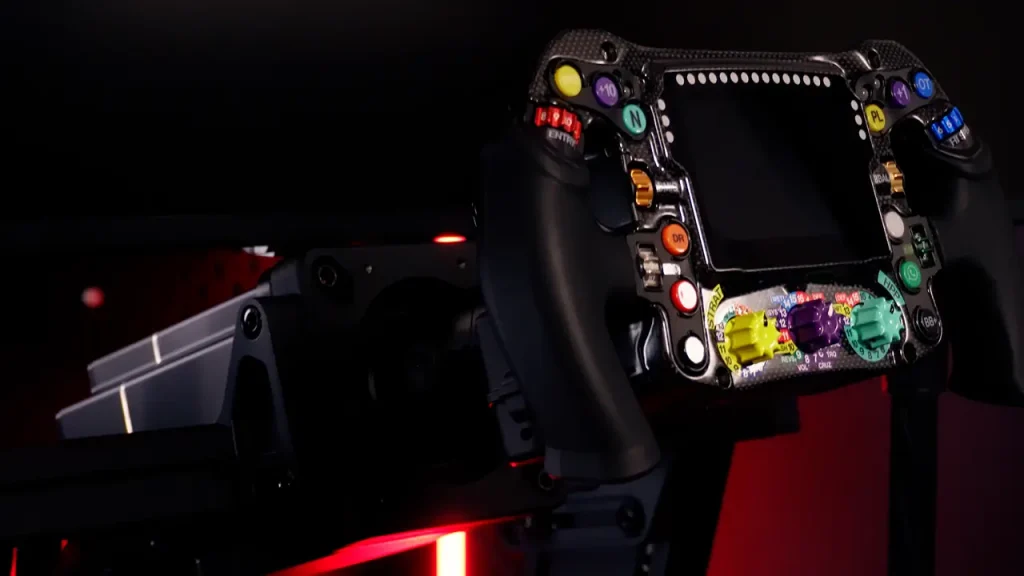

Instead, Simucube decided to do all of their talking on the track with the performance. Despite the design not changing in 6 years, a lot has. From big improvements to the software, to new force feedback algorithms and features like the new 360Hz iRacing specific FFB.
The Pro wheel base sits above the Sport, but below the Ultimate, but the price difference between the three wheels isn’t linear.
| Wheel base | Performance | Price | Price per Nm |
|---|---|---|---|
| Simucube 2 Sport | 17Nm | €1290.14 | €75 |
| Simucube 2 Pro | 25Nm | €1504.75 | €60 |
| Simucube 2 Ultimate | 32Nm | €3274.30 | €102 |
There is an 8Nm performance increase from the Sport to the Pro wheel base, but only a €214 price increase. Jumping up to the Ultimate, there is a 7Nm increase from the Pro wheel, but a whopping €1770 price increase.
This pricing structure makes the Pro the best value wheel base of the three, and the one I’d recommend getting. Although, the Simucube 2 Sport remains more than powerful enough for many.
Price of the Simucube 2 Pro
Back in 2019, when the second generation of Simucube wheel bases were released. The Pro wheel base, which sits in the middle of Simucube’s lineup, cost €1270 or $1450.
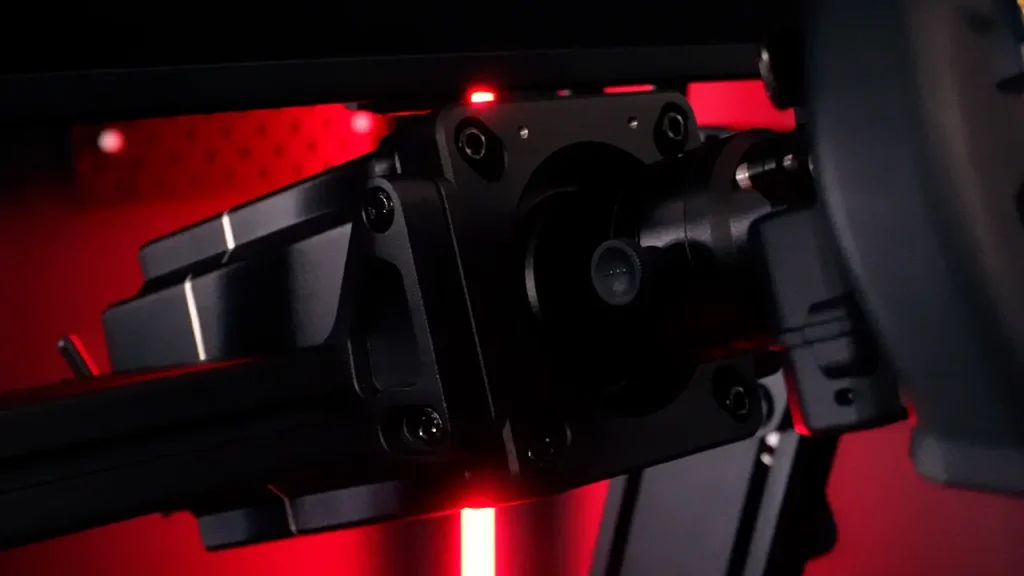
In a world with inflation ranging from 1-8% over the past 5 years, and mid-range Clubsport Fanatec wheel bases that now cost €1000, it is great to see the cost of the Simucube 2 Pro sticking pretty steady.
Now, in 2025, you can pick up the Simucube 2 Pro for €1504.75, $1449.00, or £1240.00
| Product | Price |
|---|---|
| Simucube 2 Pro | UK: £1240.00 EU: €1504.75 US: $1449.00 |
What is the competition?
When it comes to competitors in the direct drive wheel space, you have a few big names, but none are really competing toe-to-toe with Simucube.
- Fanatec have their older DD2 with 25Nm of peak torque, although that has been discontinued, meaning the Clubsport DD+ at 15Nm is their current flagship.
- SIMAGIC has its newly released Alpha Evo lineup, with the 18Nm Pro being the most powerful.
- MOZA Racing has its R21 which, you guessed it, creates 21Nm of peak torque, again a good way shy of the Simucube wheel base.
- Then there is Asetek, who has the most direct competitor with the Invicta wheel base that creates 27Nm of peak torque.
These wheel bases range in price, with the Simucube 2 Pro sitting towards the more expensive end alongside the Asetek Invicta once tax has been accounted for. It’s clear that most other brands are focusing on the slightly lower performance numbers at a slightly lower price. Simucube and Asetek really are going head-to-head in the high performance category.
| Wheel base | Performance | Price |
|---|---|---|
| Fanatec ClubSport DD+ | 17Nm | €999.95 (Inc Tax) |
| SIMAGIC Alpha Pro | 18Nm | $699.00 (Exc Tax) |
| MOZA Racing R21 | 21Nm | €939.99 (Inc Tax) |
| Fanatec Podium DD2 | 25Nm | €1499.95 (Inc Tax) |
| Simucube 2 Pro | 25Nm | €1504.75 (Inc Tax) |
| Asetek Invicta | 27Nm | €1299.95 (Exc Tax) |
Unboxing and what do you get included in the box
Opening up the very orange and distinctly Simucube box, you’re presented with the usual stickers and manuals. A physical manual is a rare sight these days, and I do like that.
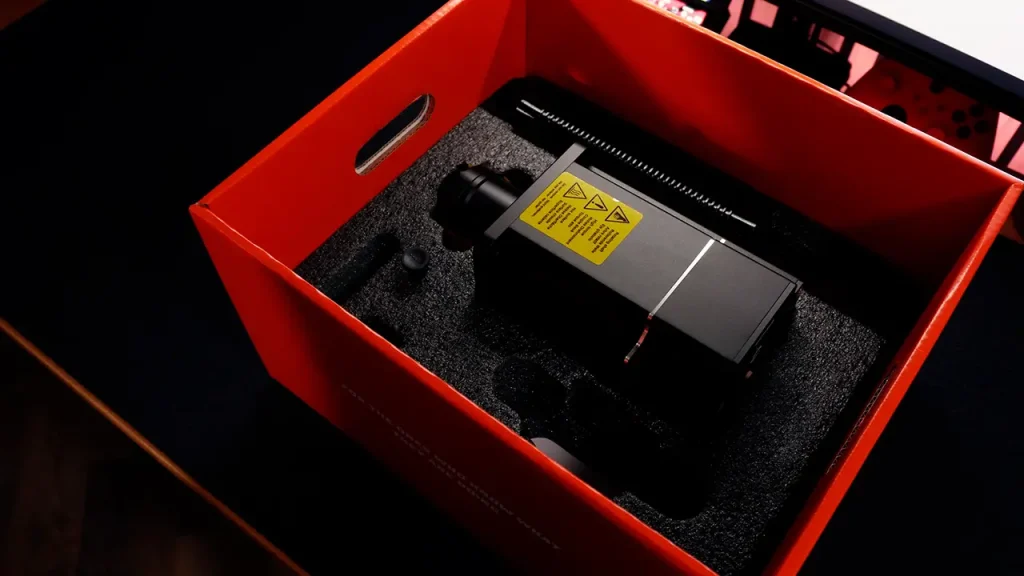
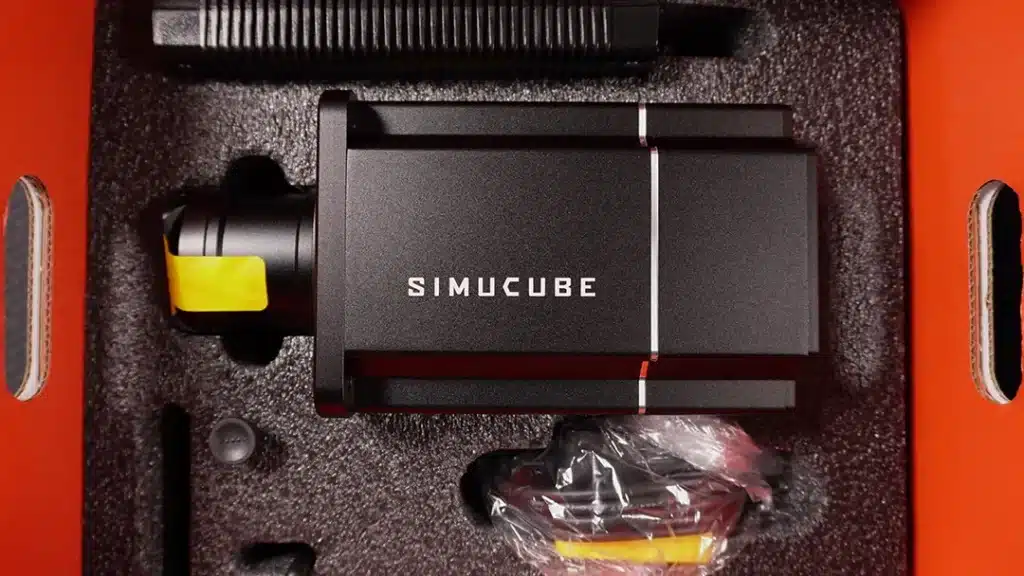
You get the wheel base, snuggly packaged in the protective foam, along with the PSU, quick release pin and a few extras. Those extras are the E Stop, the wireless antenna, and a range of cables.
One thing I do want to call out, is the E Stop, which I’m really not a fan of. First off, this thing is bright yellow, and doesn’t blend well into a predominantly black sim rig. But worse than that, there are no mounting options baked in. I had to secure mine with 3M tape which is far from ideal. Why didn’t Simucube simply include a couple of pre-drilled holes.
The design of the Simucube 2 Pro
When you do manage to get the Pro wheel base out of the box, something I very much struggled with. You’ll immediately notice its quality. The outer case is extremely durable, constructed entirely from metal, as is the quick release.
The design itself is pretty sleek and minimal. I do like this styling. You won’t find any flashy RGBs that brands like Asetek and SIMAGIC have used, and to be honest, you don’t miss them in the slightest. There is a simple bare metal ring around the entire base, with everything else finished in a lovely textured black.
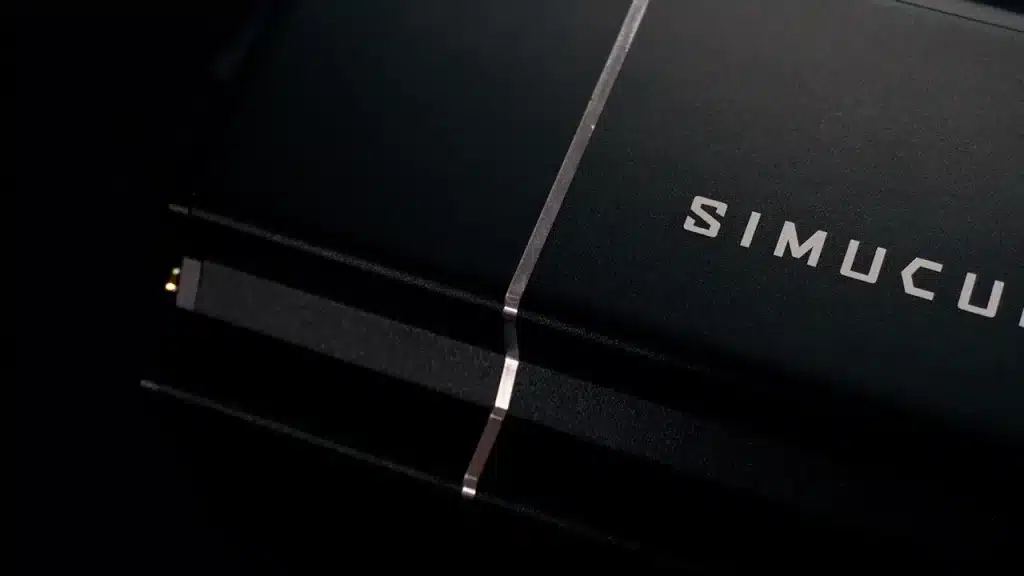
In terms of size, the Simucube 2 Pro is remarkably small. It looks large in images as it’s just a big block of metal. But having this next to wheels like my Fanatec Clubsport DD+ showcases just how compact this form factor is.
It’s slightly longer than my Clubsport DD+, but crucially, it’s shorter and skinnier at just 130mm compared to 160mm. For me, this is the important dimension with a wheel base as it dictates how low and close you can mount your monitor.
Across the front of the wheel, you’ve got four mounting holes, and they’re actually the only way to mount this wheel base. Although, if you’re looking to bottom mount the wheel, there is an adapter available. The wheel shaft and quick release is solid and functional, with no connections on show.
In my recent review of the new SIMAGIC Alpha Evo, I highlighted the over use of branding and logos all over the wheel. This Pro wheel base is an example of how to do branding on a product. The top is completely clean, with a Simucube logo on either side being the only real visible branding you’ll see from the cockpit. Yes, there is a logo on the rear which you won’t see often, and another on the QR, but again, you will hardly ever see that one with a wheel connected.

Quick release
One area where the Simucube wheel base is starting to show its age a little is in the quick release. This is an area that can really allow a wheel base to shine, as it’s the part of the wheel base you’ll interact with the most if you own more than one steering wheel.
The slide down mechanism is absolutely fine, however, you then need to secure the quick release with a detachable pin. If you don’t, the steering wheel will simply fall off when rotated.
This method is asking for trouble. If the pin goes missing, you essentially cannot use the wheel until you buy another one. And even thought the pin is really securely attached once pushed all the way through. Deep in my mind, I still have that sense of dread of “what if the pin does come out mid race“. Even though this is pretty much impossible.
Other sim racing brands really have mastered the art of the quick release. Asetek in particular have an almost identical QR system to Simucube. Although their quick releases feature a locking mechanism built in, which is a way better design. Even brands such as MOZA and Fanatec have all-in-one quick releases that work well enough.

I do hope, and expect, the next generation of Simucube bases to include an Asetek-style QR without the need for a pin. Also, some form of data pass through implementation would be really nice to have. Currently, pretty much all steering wheels need to be connected with a cable, such as this GSI wheel, or my Sim-Lab Mercedes wheel.
Connection ports
It is worth noting that the Simucube wheel base does come with a wireless antenna. This allows some steering wheels to not need a hard wired connection. These include wheels from Ascher Racing, Cube Controls and a few other select brands.
On the rear of the wheel, there is a distinct lack of ports. There is one for the power, another for the USB to PC connection, the E stop port and the antenna connection. Other than this, there is just a single accessory port. Racing on PC, and with there being no real Simucube accessories currently, this isn’t too much of an issue.

My current setup with 2 ActivePedals is that all pedal data connections go into my Simucube Link Hub, which then goes to my PC. My wheel base, and all other accessories such as shifters etc, are connected to a powered USB hub.
Would it be nice to have my shifters and other accessories connected directly to the wheel base to avoid extra USB cables? Sure. Although, racing on PC with a USB hub at the base of my sim rig, this really isn’t an issue, and I’d imagine ensuring compatibility with numerous brands devices would be a big headache.
Software
Once you do have your Simucube wheel connected, you can then start tweaking settings inside the Tuner software. This is the second app that Simucube has released, the first being True Force, which you can still use if you want. True Force supports the wheel bases fine, but doesn’t support any Simucube pedals. So if you have a complete Simucube setup with pedals, Tuner is the best place to go.
The UI of the Tuner software is clean and easy to understand. You can see the devices you have connected and quickly jump into adjusting any settings for each one. For all Simucube products, you get a lot of customisation, and to be honest, a lot of it can be pretty daunting to understand.
There are multiple sub menus hiding a whole range of settings available to tweak. These include your basic options such as the max strength and rotation, to the mechanical feel of the wheel, and how it performs on a more granular level.
These settings are there for those who like to tinker which is great, and the way the settings are categorised and presented ensure things don’t become too overwhelming. But for those that just want to change a few key settings and jump on track, that is where profiles come into play.
Simucube has a system called “Paddock”, where users can upload their own configurations for others to download and use. You can quickly head in here, narrow down what you’re looking for, and download a configuration to test it out.
This system is incredibly intuitive and easy to use, and it helped me quickly get into a game with a decent force feedback configuration without the need to even touch a single setting. From there, you can make adjustments and save the profile for quick access later.
Performance review
Now, with everything configured, we can jump on track and really test this base out. And boy does this thing perform well. Having experienced a fair few direct drive wheels, my usual process is jumping into an iRacing session to get a feel for the wheel and the force feedback. Then proceed to spend the next hour tweaking settings.

With the Simucube wheel, I booted up iRacing as per normal, but from the first lap, it was evident that the force feedback offered from the Pro wheel was simply in a class of its own. I then spent the next hour on track, not in settings menus, simply enjoying how good the wheel felt out of the box. There really was nothing to say that this wheel was designed over 6 years ago.
The power delivery and weight of the force feedback feels so dialled in, and the speed that the wheel delivers the feedback is incredible. This really feels like a wheel that has been so well optimised, and thanks in part to the 360Hz update for iRacing, subtle changes in the track surface and riding over kerbs feels so natural.
One area where this wheel really stands out, which is one of the big reasons for the wheel feeling so natural, is the smoothness of the force feedback delivery. If you’ve ever sim raced using a wheel like the Logitech G923, or an older Thrustmaster wheel, you’ll have felt the internal gears or mechanisms which can hamper the actual force feedback details you feel.
Progressing up to direct drive wheels such as the Fanatec ClubSport DD, or any MOZA or Asetek base, and this sensation pretty much dissipates. The joy of a direct drive wheel is that there are no internal mechanisms to get between you and the force feedback. However, with some direct drive wheels, you can still sense some graining in the wheel shaft rotation.
With the Simucube 2 Pro, this sensation really isn’t there, which is a good thing. The force feedback transitions so smoothly, and feels clean of any artifacts or distractions.

Is the Simucube 2 Pro wheel base worth buying?
It is safe to say that the Simucube 2 Pro wheel base really is an end game product. It absolutely excels where a racing wheel should, and that is in its raw performance.
The second generation wheel base lineup, may be getting on a bit now, however, it certainly hasn’t lost anything in terms of performance. Force feedback algorithm updates have ensured this wheel base stays sharp and lacks nothing compared to its competitors.

Simucube 2 Pro vs Sport vs Ultimate
The Pro wheel base sits right in the sweet spot in Simucube’s ecosystem. Yes, it’s more expensive than the already capable Sport model. However, the price increase isn’t huge, yet the extra performance headroom you gain when upgrading from the Sport to the Pro, can make a big difference.
The Ultimate base, being more than double the price of the Pro, was really reserved for the most dedicated of pros. And this has been backed up with Simucube discontinuing the Ultimate model.
If you are looking to buy the best direct drive wheel you can, then you really don’t need to look any further than Simucube. And the Pro wheel base really does sit at the top of the performance tree.
Frequently asked questions
Even though the Simucube 2 Pro wheel base was released over 6 years ago, it is still one of the very best high performance direct drive wheel bases you can buy. Thanks to excellent force feedback and updates to the algorithm, this wheel base outperforms many newer wheels.
Both Simucube 2 Pro and Sport wheel bases are excellent direct drive wheel options. The Sport is more affordable, and with 17Nm of peak torque, can still offer enough performance for most sim racers. The Pro wheel base is a great upgrade as it opens up more headroom and performance gains.
Simucube sell their wheel bases globally, including to Europe and the United States. You’ll often find the best price for Simucube 2 Pro wheels on Simucube’s own website. I’d recommend using a Simucube price tracker to check for deals, discounts and the best price available.
Technical Specifications
Review written by Felix König














